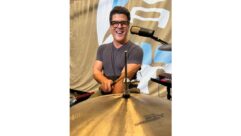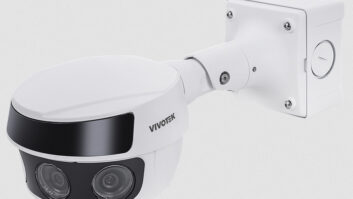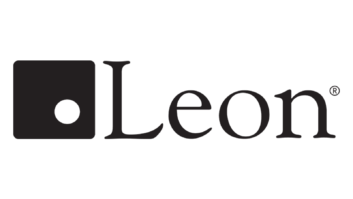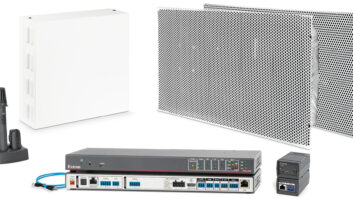PAUSE FOR REFLECTION
May 1, 1999 12:00 PM,
M. K. Milliken
Times are good; your business is booming. Your favorite projectormanufacturer has just shipped the latest, greatest machine and, sureenough, it is lighter and brighter. Better yet, you have a client anxiousto install it in a commercial mirror system behind a rear projectionscreen-both of which you will also get to sell. Does it get any better?
Wind the clock forward a couple of weeks. The gear has all shown up ontime, and your installer is at the job site finishing up. Then, your phonerings, and you are told the image through the screen does not look right.Maybe it is not square. Maybe a part of it does not seem to be in focus.Maybe it is not exactly filling the screen, or maybe a long list of othermaybes-none of which is good news. The client calls next, reminding you ofthat meeting scheduled for tomorrow morning and recalling for you just howmuch you are charging. Not a pretty picture, but the question is, how doyou fix it? A still better one is, how do you avoid these problems in thefirst place? The first thing we do is recall why we are using mirrors inthe first place. Put simply, mirrors let you get a big image out of a smallspace.
In Figure 1, we have a side view of a typical projector shooting its beamstraight through a rear projection screen. The top and bottom light raysform an isosceles triangle with the screen as its base. The apex of thetriangle is inside the projector and the middle line coming out of theprojection lens illustrates the projection axis, the path of the light raythat bisects the screen.
Figure 2 illustrates an alternative geometry, one where the projector hasbeen raised so that the projection axis can be directed downward. Noticethat the triangle now formed is a right triangle with the topmost light rayforming a 90degrees angle with the plane of the screen. If this page wereto be turned upside down, Figure 2 would become the exact inverse and theprojector would be positioned parallel to the bottom of the screen with itsprojection axis pointed upward.
Both figures have intentionally been drawn with their projectors outside ofthe box containing the screen. This is done to emphasize that the choice ofposition for the projector vertically should have nothing whatsoever to dowith size of the box in which it must eventually be enclosed. Instead, thevertical positioning of the projector results from two (but only two)determinants. The first is how high the screen should be off the floor,which depends, of course, primarily on its spatial relationship to theaudience. Once we know this height, we also know the exact position(vertically) of screen center, and this will be essential for establishingthe optimal projection axis.
The second determinant is whatever off-axis limits are imposed by theprojector manufacturer. How much flexibility does this particular projectorpermit in moving it up or down from a direct, on-axis orientation to thescreen while still maintaining a rectangular image that has four 90degreescorners. Some projectors cannot make such a square image if theirorientation is dead normal (0degree) to the screen. They expect instead tobe positioned off-axis such that they point either downward (generally withtheir feet pointing toward the ceiling) at screen center or upward at it(with their feet toward the floor). Whatever the case, it is essential tounderstand that whatever may be the positional and orientationalconstraints for each projector, they must categorically be observed andrespected. Mirrors cannot override these limits.Within those limits, however, we are free to position our projector as wewish to achieve the optimum projection axis. Here, the decision shouldalways be made such that the centermost light ray emanating from the deviceis aimed (as nearly as possible) straight through the center of the screenand directly into the eyes of the audience. After all, the design goal ofany display system is to get as many of the projector’s light rays aspossible delivered into the audience’s eyes. Because most audiences aretypically positioned with their eye points below screen center, theprojection geometry illustrated in Figure 1 will often result in themajority of the projected light rays passing uselessly above the viewers’heads. Figure 2, however, with its downward orientation, is much morelikely to shine the light directly into that same audience’s faces.Whatever the optimal position for the projector may be, only after it hasbeen identified and established are we ready to look at mirrors.
Once again, all mirrors are going to do for us is enable the folding ofwhichever triangle we have chosen such that it fits into some box (theprojection booth) or other. Figures 1 and 2 illustrate two distincttriangles. Whether each is an isosceles triangle, a right triangle, or anyother kind is irrelevant to how and to what extent it can be folded. Notethat either of the triangles in the figures can be transected inside theirboxes by an enormous variety of lines at a huge variety of angles.Theoretically, any one is as good as another, although some will be longerand some shorter than others. Nevertheless, whatever line we choose willbecome the crease of our first fold and will scale to the verticaldimension of the real life mirror. Thus, Figure 2 becomes Figure 3, and ifthis first fold finishes with all or even part of the projector outside thebox, we will either have to start over with an alternative first fold lineor make a second fold in order to fit everything in.
The difficulty with many of the first fold lines that we could draw is thatin real life, these lines are mirrors that have to be supported by racks.Racks are not nearly as variable as lines drawn by CAD systems. Therefore,we need to understand that an underlying but major constraint of any mirrorsystem is the limited flexibility of its racking configuration. Theuprights of self-supporting rack systems, for instance, need to be parallelto and equidistant from the screen. This structural fact severely limitsthe number of possible mirror sizes and angles. Yes, technically, a rackcould be built to accommodate any and every mirror orientation, but such aproduct line would be impractical and prohibitively expensive.
If we start with a case where the optimal orientation for our projector isabove the centerline of the screen (Figure 2), and if we discover thatwe’ll need to use two mirrors (Figure 3), then we make a second and finalfold and what we get looks like Figure 4. Please look carefully at thisdrawing. Although it is obvious to note that the three lines extending tothe screen from the large mirror are exactly the same as the comparablethree line segments in Figures 1 and 2, it may not be so clear that themirrors have to be set in their racks at angles exactly equal to what areshown in the drawing. A moment’s further reflection will reveal that theprojector must be inverted in its rack and set exactly at its specifiedangle or the image will be skewed.
Anyone who believes that he can correct for a departure from one of theseparameters by fiddling in the field with the others is in for trouble. No,if the CAD drawing provided by your screen manufacturer decrees that theangle for the large mirror must be 27degrees, you cannot make it 25degreesand fix the resultant distortion by adjusting the other mirror or theprojector. If, on the other hand, you make sure that the entire mirror andrack assemblage is aligned symmetrically with the screen and in accordancewith its drawing, then, yes, your mirror system will be exactly thesolution that you had always assumed it to be.
The last thing to discuss regarding mirrors relates neither to theirgeometry nor to their racks but to their type. For years, everyone who hasused them has understood that projection-grade mirrors come in twoflavors-first surface glass and Mylar. The distinction between the two hasreasonably been thought to be mechanical. That is, although the substratesof the two mirrors were completely different, the actual reflective surfaceon each was ubiquitously supposed to be identical. Therefore, the photonsstriking that shiny, metalline surface on each would bounce off long beforethey could ever know what kind of material might lie beneath it.
Preferences for one kind of substrate over the other abounded. Generally,they focused on the issue of flatness; glass was correctly perceived asless likely to wrinkle. On the other hand, Mylar is both lighter in weightand sturdier; it, too, had enthusiastic proponents. Finally, the choicebetween them has historically been mostly a matter of personal taste. Untilnow, that is.
It turns out that many sheets of Mylar, which can now be stretched into newprojection mirrors, can contain a flaw that will render them unacceptablefor high-quality rear projection. What is fascinating about thisimperfection is that under conditions previously considered typical, it isinvisible. Illuminate such a mirror with any number of classic projectors,and the reflected image will be perfect. Take the same mirror, however, andshine a really bright light source at it, and something unexpected happens.The reflection off the mirror can now come to include an odd, stripingeffect that appears as an irregular series of diagonal striations visiblein the displayed imagery.
When first noticed, this effect is confusing because when you look to findthem on the surface of the mirror itself, there is no trace of them to befound. Yet, when the mirror is jiggled, the striations in the image alsomove accordingly; they must emanate from the mirror. Intriguingly, when theintensity of the illuminating light source is reduced, all traces of theaberration vanish. It appears, then, that something in the manufacturingprocess of the Mylar film or the vacuum techniques used to deposit thealuminum (or whatever) upon its surface, creates a microscopicallynon-uniform surface that is detectable only as the amplitude of the lightfalling on it becomes large.
Unfortunately for that technology, projectors in 1999 have finally becomebright enough to satisfy all kinds of display requirements reliably atprices that are decreasingly offensive. If that good news is true today, weall know that by next year the projectors we will eventually be using will,mirabile dictu, be yet brighter still. Therefore, unless or until themanufacturers of the film-based mirrors correct whatever is defective intheir processes, first surface glass mirrors would now seem to be the onlyreliable specification and choice.









